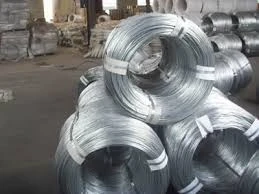Innovative Applications of Metal Mesh in Modern Engineering and Architecture
The Role of Metal Mesh in Modern Applications
Metal mesh has become an essential component in various industries due to its unique properties, versatility, and functionality. This mesh, made from various metals such as stainless steel, aluminum, or carbon steel, features a network of interwoven strands that provide a range of benefits, from structural reinforcement to filtration.
Characteristics and Benefits of Metal Mesh
One of the standout characteristics of metal mesh is its strength-to-weight ratio. This means that it can provide significant structural support while remaining lightweight. The durability of metals, especially stainless steel, ensures that metal mesh can withstand harsh environments, extreme temperatures, and corrosive conditions. This makes it an ideal solution for applications in industries like construction, aerospace, automotive, and marine.
In addition to strength, metal mesh offers excellent air, light, and fluid permeability. These qualities allow for efficient ventilation, drainage, and filtration. For example, in architectural applications, metal mesh can be used as a façade or decorative element that allows natural light to permeate while providing aesthetic appeal.
Applications in Various Industries
1. Construction and Architecture Metal mesh has numerous applications in the construction industry. It can serve as reinforcement in concrete structures, enhancing strength and cracking resistance. In architectural design, it is often used as a decorative feature on buildings' exteriors, providing a modern aesthetic while allowing air flow.
2. Filtration and Separation The filtration properties of metal mesh make it a critical component in a variety of processing applications. Industries such as food and beverage, pharmaceuticals, and chemicals utilize metal mesh to separate solids from liquids, filter out impurities, and ensure product quality. The mesh can be tailored in terms of aperture size to meet specific filtration requirements.
metal mesh

3. Automotive and Aerospace Metal mesh is widely used in the automotive and aerospace industries, where weight reduction without compromising strength is paramount. It is employed in components such as heat exchangers and air filters to enhance performance and efficiency. The lightweight properties of metal mesh also play a significant role in increasing fuel efficiency in aircraft.
4. Safety and Security In terms of safety, metal mesh is often utilized in security applications, including fencing, window guards, and even in protective clothing. Its strength deters unauthorized access, while its visibility allows airflow and light penetration. In industrial settings, metal mesh can also protect machinery and workers from debris and hazards.
5. Arts and Crafts Beyond industrial applications, metal mesh has found its way into the world of art and design. Artists and designers utilize metal mesh to create intricate sculptures and decorative panels. The ability to manipulate metal mesh allows for a blend of creativity and structural integrity, resulting in visually striking pieces.
Innovations and Future Directions
As technology advances, the manufacturing processes for metal mesh are becoming more sophisticated. Techniques such as 3D printing and laser cutting are enabling the creation of complex, custom-designed metal mesh structures that were previously unachievable. These innovations open up new pathways for applications across various fields, including nanotechnology, where fine mesh can be used for advanced filtration and sorption processes.
Moreover, the integration of smart technologies into metal mesh, such as sensors and IoT capabilities, is paving the way for future applications in areas like smart buildings and environmental monitoring. This convergence of traditional material properties with modern technology promises to enhance functionality and adaptability.
Conclusion
In conclusion, metal mesh is a vital material in the contemporary world, supporting a myriad of applications across various industries. Its unique characteristics—strength, lightweight, and permeability—along with its adaptability, make it an invaluable resource in both practical and creative endeavors. As innovations continue to shape the future of metal mesh, we can expect to see even broader applications and exciting developments that enhance its utility in our daily lives and industries. The enduring relevance of metal mesh in modern technology underscores its importance as a foundational material with endless possibilities.
-
Space-Saving Chain Fence Hacks Vertical Gardening with Cyclone MeshNewsJul.16,2025
-
Innovations in Iron Nail Wire Production for Modern ConstructionNewsJul.16,2025
-
Creative Uses of Wire Netting Fence in Modern Landscape DesignNewsJul.16,2025
-
Barbed Wire Fence Innovations in Anti-Climb TechnologyNewsJul.16,2025
-
Architectural Uses of Umbrella Nails for Aesthetic Roof DesignsNewsJul.16,2025
-
Architectural Uses of Razor Barbed Wire in Secure Urban DesignNewsJul.16,2025




